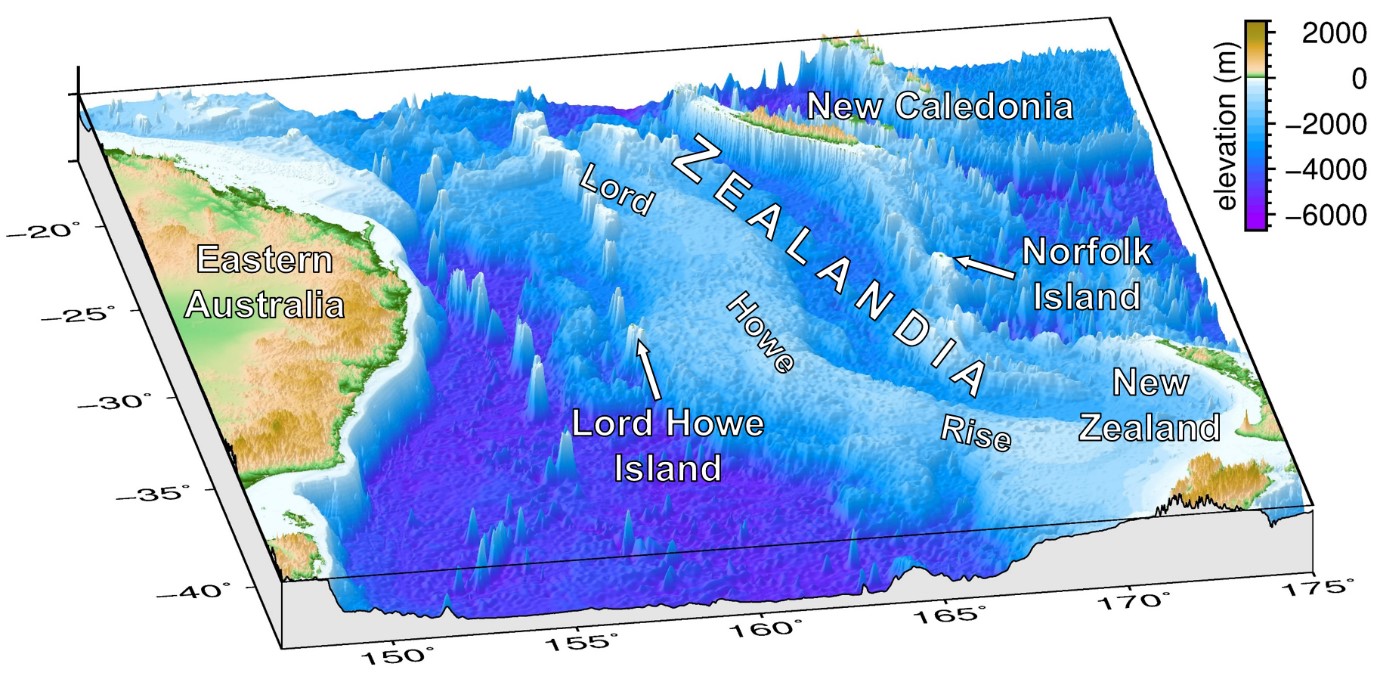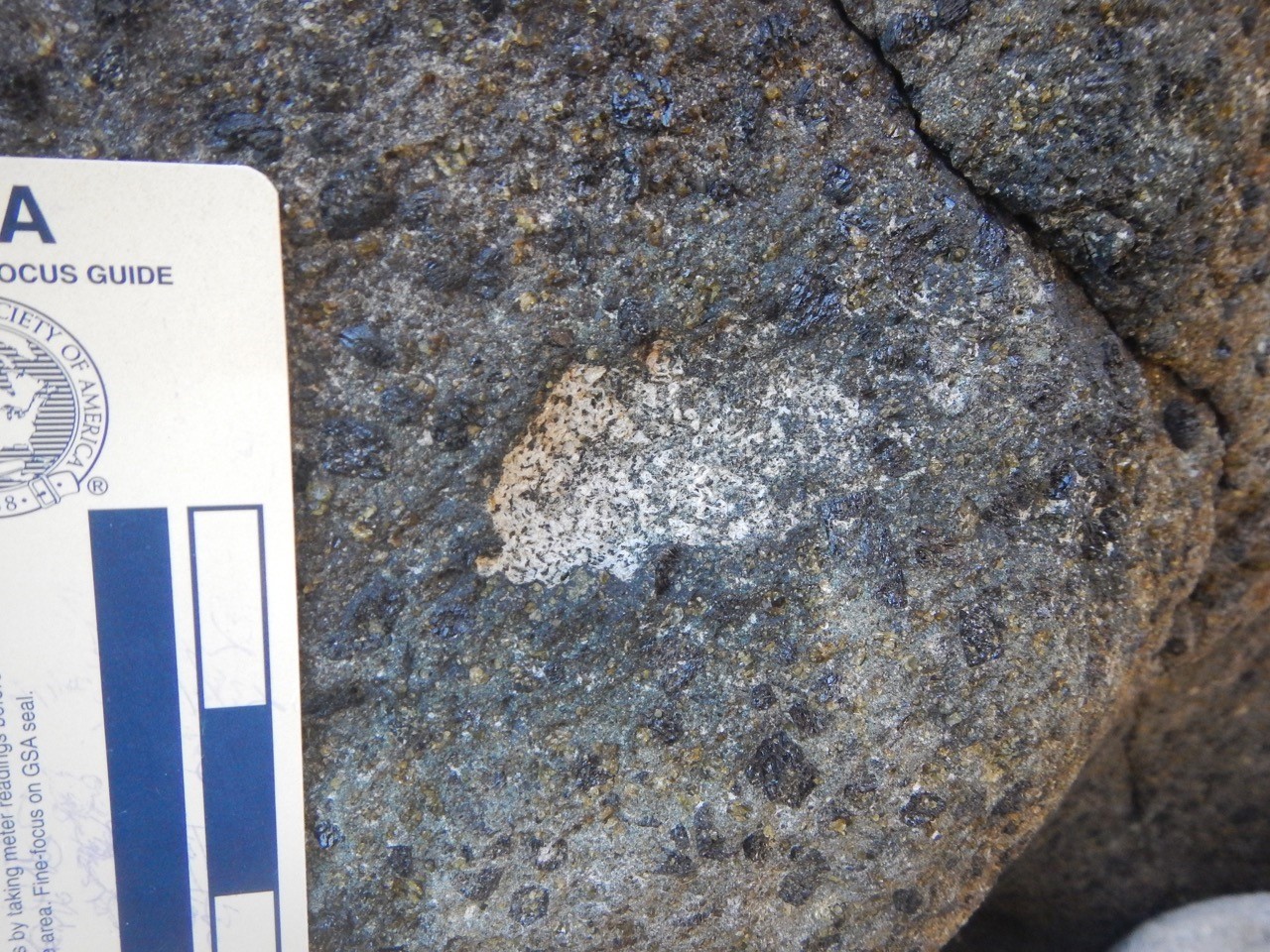News
Lord Howe Island – a window to the depths of Zealandia?
Published:5 April 2019
Lord Howe Island – a window to the depths of Zealandia?
Rare pieces of rock from Lord Howe Island may provide insights into the deep geology of Zealandia, a submerged continental fragment once joined to Australia.
Rare pieces of rock from Lord Howe Island may provide insights into the deep geology of Zealandia, a submerged continental fragment once joined to Australia.

Map of northern Zealandia, a fragment of continental crust submerged in the region between Australia, New Zealand and New Caledonia.
A group of geologists from the Japan Agency for Marine Earth Science and Technology (JAMSTEC), Geoscience Australia, the Geological Survey of New South Wales and the University of Wollongong, recently visited Lord Howe Island to sample xenolith rocks.
Senior Geoscientist from Geoscience Australia, Dr Ron Hackney, said xenoliths are pieces of rock that differ from the mass of rock that they are hosted in (volcanic basalt in this case), meaning they have been introduced from elsewhere at some stage.
“Lord Howe Island lies on the western edge of Zealandia, an ancient, submerged continental fragment that separated from Australia tens of millions of years ago,” Dr Hackney said.
“Until recently, it was thought that the volcanic rocks on Lord Howe Island only represented the most recent history of Zealandia, which was the last six to seven million years.”
This observation changed in May 2017 when Dr Saneatsu Saito, a geologist from JAMSTEC and project leader, visited the island to film a documentary on the Lost Continent of Zealandia. While examining the huge boulder that makes up Little Island, he identified xenoliths that differ markedly from their host lavas.
“We suspect these rare rock fragments may have been dragged to the surface from depths of many kilometres as molten rock rose to the surface,” Dr Hackney said.
“They therefore provide rare clues about the deep geology of Zealandia, which is extremely important given that ninety-five percent of Zealandia is submerged.
“Besides New Zealand and New Caledonia, Lord Howe Island is one of the few parts of Zealandia that lies above sea level.
“This means it’s uniquely located to provide a window into the deep crust of this enigmatic continental fragment.”
Over the coming year, the composition and chemistry of the xenoliths will be analysed and used by the team of researchers to link the geological evolution of Lord Howe Island to the broader geology of Zealandia.

A xenolith (the white section) is preserved in the Little Island lava block. This xenolith may come from a depth of many kilometres within the Earth’s crust (Photo: S. Saito, JAMSTEC).
Senior Geologist from the Geological Survey of New South Wales, Dr Kate Bull, said the team also undertook reconnaissance fieldwork, initiating a process to update the geological map of the island.
“The aim of the mapping is to further define the various kinds of volcanic rocks that make up Lord Howe Island,” Dr Bull said.
“A more detailed understanding of the volcanic deposits will help clarify what kind of volcanic eruptions occurred and in what environment they were deposited, such as underwater or above sea level.
“By learning more about Lord Howe Island geology in general, the scientific and ecotourism value of the island can be enhanced.”
The results of the surveys and sampling are expected to be available in mid-2020.

The group of geologists who worked with the island’s museum to sample some of the rare xenoliths. From left to right: Yasuhiro Hirai (JAMSTEC/Kanazawa University), Ian Hutton (Lord Howe Island Museum), Megan Williams (University of Wollongong), Kenji Shimizu (JAMSTEC), Kate Bull (Geological Survey of New South Wales), Saneatsu Saito (JAMSTEC), Ron Hackney (Geoscience Australia), Sarlae McAlpine (Geoscience Australia), Yoshihiko Tamura (JAMSTEC) (Photo: I. Hutton).
Contact:
Phone:
Email:




